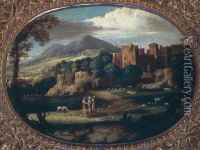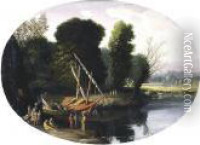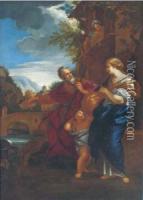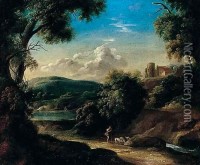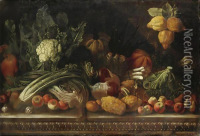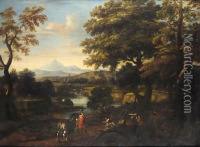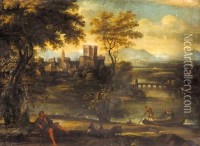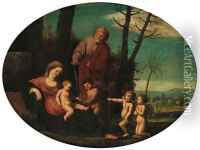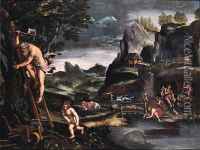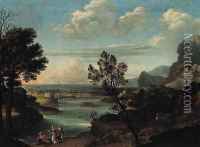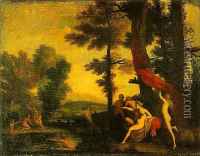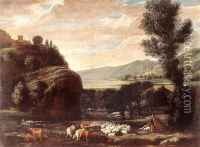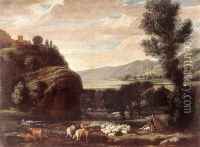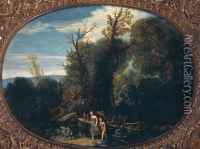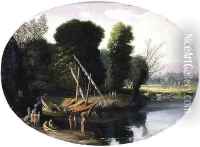Pietro Paolo Bonzi Paintings
Pietro Paolo Bonzi, also known as Gobbo dei Carracci or Gobbo dei Frutti for his notable works featuring fruits and landscapes, was an Italian painter born around 1576 in Cortona, Tuscany. Little is known about his early life, but he is believed to have moved to Rome at a young age where he was exposed to the work of the Carracci family, which had a lasting influence on his artistic style.
Bonzi's work was characterized by his landscape paintings and still lifes, which often included detailed depictions of fruits and flowers. He was one of the early artists to contribute to the genre of still life in Italy, a genre that would not become widely popular until the 17th century. His landscapes were typically composed with a keen sense of naturalism and often served as backgrounds for mythological or religious scenes.
Despite his nickname 'Gobbo,' which means 'hunchback' in Italian, Bonzi was well-regarded in the Roman art community. He was associated with the Accademia di San Luca, a prestigious academy of artists in Rome, where he interacted with many prominent artists of the time. His work was influenced by the naturalistic styles of Annibale Carracci and the Bolognese School, as well as by the dramatic light and shade techniques of Caravaggio.
Bonzi also collaborated with other artists, such as the landscape painter Paul Bril, and he contributed to the decoration of several Roman palaces, including the Palazzo Borghese. His paintings are known for their vivid colors and the lifelike quality of their subjects, whether in the lush foliage of his landscapes or the tactile renderings of fruit in his still lifes.
Pietro Paolo Bonzi's exact date of death is uncertain, but he is believed to have died around 1636. While he may not be as widely recognized as some of his contemporaries, his contributions to the development of landscape and still life painting in Italy are noteworthy. His works can be found in various art collections and museums, offering a glimpse into the early Baroque period's experimentation with naturalistic representation and the beginnings of still life as an independent genre.
